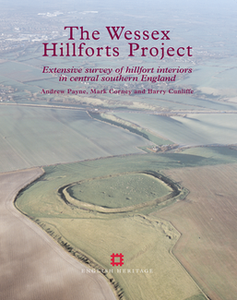English Heritage Archaeological Monographs
English Heritage, 2014. https://doi.org/10.5284/1028203. How to cite using this DOI
Data copyright © English Heritage unless otherwise stated
This work is licensed under the ADS Terms of Use and Access.
Primary contact
Historic England
The Engine House
Firefly Avenue
Swindon
SN2 2EH
Resource identifiers
- ADS Collection: 1416
- DOI:https://doi.org/10.5284/1028203
- How to cite using this DOI
The Wessex Hillforts Project: Extensive Survey of Hillfort Interiors in Central Southern England
Payne, A., Cunliffe, B., Corney, M.
English Heritage (2006)
Abstract:

The earthwork forts that crown many hills in Southern England are among the largest and most dramatic of the prehistoric features that still survive in our modern rural landscape. The Wessex Hillforts Survey collected wide-ranging data on hillfort interiors in a three-year partnership between the former Ancient Monuments Laboratory of English Heritage and Oxford University. These defended enclosures, occupied from the end of the Bronze Age to the last few centuries before the Roman conquest, have long attracted archaeological interest and their function remains central to study of the Iron Age. The communal effort and high degree of social organisation indicated by hillforts feeds debate about whether they were strongholds of Celtic chiefs, communal centres of population or temporary gathering places occupied seasonally or in times of unrest. Yet few have been extensively examined archaeologically. Using non-invasive methods, the survey enabled more elaborate distinctions to be made between different classes of hillforts than has hitherto been possible. The new data reveals not only the complexity of the archaeological record preserved inside hillforts, but also great variation in complexity among sites. Survey of the surrounding countryside revealed hillforts to be far from isolated features in the later prehistoric landscape. Many have other less visible, forms of enclosed settlement in close proximity. Others occupy significant meeting points of earlier linear ditch systems and some appear to overlie, or be located adjacent to, blocks of earlier prehistoric field systems.
Download monograph
| The Wessex Hillforts Project: Extensive Survey of Hillfort Interiors in Central Southern England, Payne, A.|Cunliffe, B.|Corney, M., English Heritage (2006), ISBN: 9781848022218 | 17 Mb |





